Archive for the 'Animation' Category
Homage to Mme. Edelhaus
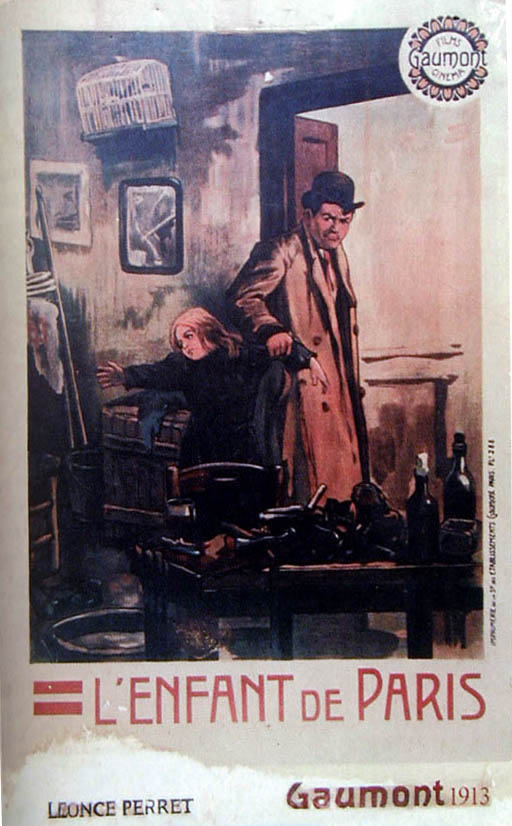
Why are Americans polarized between francophobia and francophilia? Some people mock the French for liking Jerry Lewis, when most French people probably don’t even know who he is. Others think that France is the repository of world culture and represents the finest in writing about the arts, even though the Parisian intelligentsia can be pretentious and hermetic.
But we must face facts. When it comes to cinephilia, the French have no equals. They grant film a respect that it wins nowhere else. Spend a year, or even a month, in Paris, and you will feel like a Renaissance prince. This is a city where one lonely screen can run tattered prints of One from the Heart and Hellzapoppin!, once a week, indefinitely.
My first trip was too brief, only a week in 1970, but my second one—four weeks of dissertation research in 1973—left me exhausted. Reading Pariscope on the way in from the airport, I learned about a Tex Avery festival. I checked into my hotel and Métro’d to the theatre, where I and a bunch of moms and kids gazed in rapture upon King-Size Canary. Another time, also coming in from the airport, Kristin and I passed a marquee for King Hu’s Raining in the Mountain. Next stop, Raining in the Mountain. My memories of The Naked Spur, Ministry of Fear, Liebelei, Tati’s Traffic, and Vertov’s Stride Soviet! are inextricable from the Parisian venues in which I saw them.
Sound like a lament for days gone by? Nope. You can find the same variety on offer today. Of course the two monthlies, Cahiers du cinéma and Positif, have to take a lot of credit for this. Add Traffic, Cinéma, and several other ambitious journals, and you get a film culture unrivalled in the world.
Critics from Louis Delluc onward have led thousands of readers toward appreciating the seventh art. Historians like Georges Sadoul, Jean Mitry, Laurent Mannoni, Francis Lacassin, and others have enlightened us for decades. Academic film analysis would not be what it is without Raymond Bellour, Noel Burch, Marie-Claire Ropars, Jacques Aumont, and a host of other scholars. Above all stands André Bazin, the greatest theorist-critic we have had.
And the books! Arts-and-sciences publishing receives government subsidies; the French understand that books contribute to the public good. There are plenty of worse ways to spend tax dollars (e.g., trumped-up military invasions). The French, like the Italians, have created an ardent translation culture too. If you can’t read something in Russian or German, there’s a good chance it’s available in French.
I was reminded of the glories of Gallic film publishing when the mailman tottered to my door this week with twenty-two pounds worth of recent items I’d ordered. I haven’t even read them yet; otherwise, they’d be filed with Book Reports. Instead I want to spend today’s blog celebrating them as fruits of an ambition that has no counterpart in English-language publishing. All are grand and gorgeous and informative to boot.
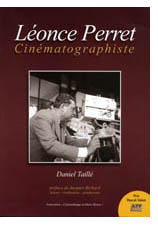 Daniel Taillé, Léonce Perret Cinématographiste. Association Cinémathèque en Deux-Sèvres, 2006. 2.5 lbs.
Daniel Taillé, Léonce Perret Cinématographiste. Association Cinémathèque en Deux-Sèvres, 2006. 2.5 lbs.
A biographical study of a Gaumont director still too little known. Perret was second only to Feuillade at Gaumont, and he performed as a fine comedian as well. His shorts are charming, and his longer works, like L’enfant de Paris (1913), remain remarkable for their complex staging and cutting. After a thriving career in France, Perret came to make films in America, including Twin Pawns (1919), a lively Wilkie Collins adaptation. He returned to France and was directing up to his death in 1935.
Although the text seems a bit cut-and-paste, Taillé has included many lovely posters and letters, along with a detailed filmography, full endnotes, and a vast bibliography. It compares only to that deluxe career survey of the silent films of Raoul Walsh, published by Knopf. . . .Oh, wait, there’s no such book. . . .Think there ever will be?
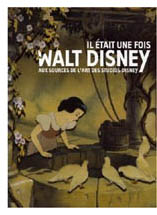 Il était une fois Walt Disney: Aux sources de l’art des studios Disney. Galéries nationales du Grand Palais, 2006. 4 lbs.
Il était une fois Walt Disney: Aux sources de l’art des studios Disney. Galéries nationales du Grand Palais, 2006. 4 lbs.
A luscious catalogue of an exposition tracing visual sources of Disney’s animation. Illustrated with sketches, concept paintings, and character designs from the Disney archives, this volume shows how much the cartoon studio owed to painting traditions from the Middle Ages onward. It includes articles on the training schools that shaped the studio’s look, on European sources of Disney’s style and iconography, on architecture, on relations with Dalí, and on appropriations by Pop Artists. There’s also a filmography and a valuable biographical dictionary of studio animators.
Some of the affinities seem far-fetched, but after Neil Gabler’s unadventurous biography, a little stretching is welcome. This exhibition (headed to Montreal next month) answers my hopes for serious treatment of the pictorial ambitions of the world’s most powerful cartoon factory. The catalogue is about to appear in English–from a German publisher.
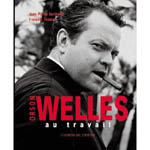 Jean-Pierre Berthomé and François Thomas. Orson Welles au travail. Cahiers du cinéma, 2006. 4 lbs.
Jean-Pierre Berthomé and François Thomas. Orson Welles au travail. Cahiers du cinéma, 2006. 4 lbs.
The authors of a lengthy study of Citizen Kane now take us through the production process of each of Welles’ works. They have stuffed their book with script excerpts, storyboards, charts, timelines, and uncommon production stills.
The text, on my cursory sampling, will seem largely familiar to Welles aficionados; the frames from the actual films betray their DVD origins; and I would like to have seen more depth on certain stylistic matters. (The authors’ account of the pre-Kane Hollywood style, for instance, is oversimplified.) Yet the sheer luxury of the presentation overwhelms my reservations. A colossal filmmaker, in several senses, deserves a colossal book like this.
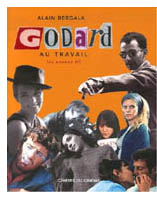 Alain Bergala. Godard au travail: Les années 60. Cahiers du cinéma. 2006. 5 lbs.
Alain Bergala. Godard au travail: Les années 60. Cahiers du cinéma. 2006. 5 lbs.
In the same series as the Welles volume, even more imposing. If you want to know the shooting schedule for Alphaville or check the retake report for La Chinoise (these are eminently reasonable desires), here is the place to look. Detailed background on the production of every 1960s Godard movie, with many discussions of the creative choices at each stage. Once more, stunningly mounted, with lots of color to show off posters and production stills.
Anybody who thinks that Godard just made it up as he went along will be surprised to find a great degree of detailed planning. (After all, the guy is Swiss.) Yet the scripts leave plenty of room to wiggle. “The first shot of this sequence,” begins one scene of the Contempt screenplay, “is also the last shot of the previous sequence.” Soon we learn that “This sequence will last around 20-30 minutes. It’s difficult to recount what happens exactly and chronologically.”
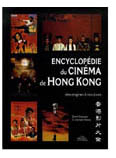 Emrik Gouneau and Léonard Amara. Encyclopédie du cinéma du Hong Kong. Les Belles Lettres, 2006. 6.5 lbs.
Emrik Gouneau and Léonard Amara. Encyclopédie du cinéma du Hong Kong. Les Belles Lettres, 2006. 6.5 lbs.
The avoirdupois champ of my batch. The French were early admirers of modern Hong Kong cinema, but their reference works lagged behind those of Italy, Germany, and the US. (Most notable of the last is John Charles’ Hong Kong Filmography, 1977-1997.) More recently the French have weighed in, literally. 2005 gave us Christophe Genet’s Encyclopédie du cinéma d’arts martiaux, a substantial (2 lbs.) list of films and personalities, with plots, credits, and French release dates.
Newer and niftier, the Gouneau/ Amara volume covers much more than martial arts, and so it strikes my tabletop like a Shaolin monk’s fist. There are lovely posters in color and plenty of photos of actors that help you identify recurring bit players. Yet this is more than a pretty coffee-table book. It offers genre analysis, history, critical commentary, biographical entries, surveys of music, comments on television production, and much more. It has abbreviated lists of terms and top box-office titles, as well as a surprisingly detailed chronology.
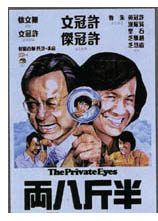 Above all—and worth the 62-euro price tag in itself—the volume provides a chronological list of all domestically made films released in the colony from 1913 to 2006! Running to over 200 big-format pages, the list enters films by their English titles and it indicates language (Mandarin, Cantonese, or other), release date, director, genre, and major stars. Until the Hong Kong Film Archive completes its vast filmography of local productions, this will remain indispensable for all researchers.
Above all—and worth the 62-euro price tag in itself—the volume provides a chronological list of all domestically made films released in the colony from 1913 to 2006! Running to over 200 big-format pages, the list enters films by their English titles and it indicates language (Mandarin, Cantonese, or other), release date, director, genre, and major stars. Until the Hong Kong Film Archive completes its vast filmography of local productions, this will remain indispensable for all researchers.
Mme. Edelhaus was my high school French teacher. A stout lady always in a black dress, she looked like the dowager at the piano during the danse macabre of Rules of the Game. She was mysterious. She occasionally let slip what it was like to live under Nazi occupation, telling us how German soldiers seeded parks and playgrounds with explosives before they left Paris. When I asked her what avant-garde meant, she replied that it was the artistic force that led into unknown regions and invited others to follow–pause–“in the unlikely event that they will choose to do so.”
For three years Mme. Edelhaus suffered my execrable pronunciation. When I tried to make light of my bungling, she would ask, “Dah-veed, why must you always play the fool?”
I suppose I’m still at it. But thanks largely to her I’m able to read these books as well as look at them. She opened a path that’s still providing me vistas onto the splendors of cinema.
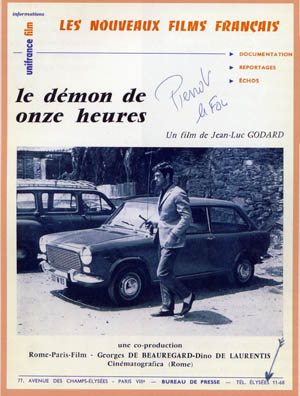
Aardman on its own
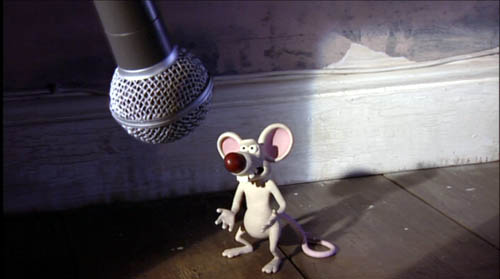
Creature Comforts: The Brood.
Kristin here—
On December 6, 2006, I commented on a Variety article which suggested that DreamWorks was probably going to sever its distribution pact with the British animation firm Aardman. The reason was the poor box-office performances of Wallace & Gromit in the Curse of the Were-Rabbit and Flushed Away.
At the time I claimed that DreamWorks had not done a good job promoting either film, despite its earlier success with its first Aardman release, Chicken Run.
Now, as Variety predicted, on January 30 Aardman announced that they would no longer be distributing through DreamWorks. The official press release on the firm’s site states:
“We’ve enjoyed a hugely successful and creative relationship with Jeffrey and DreamWorks Animation,” stated Peter Lord and David Sproxton, co-owners of Aardman Animations, “but both companies are aware that our ambitions have moved apart, and it feels like the right time to move on. Aardman has an ambitious slate of feature film projects in development and will announce their future production and distribution plans shortly.”
Variety’s coverage of the split quotes another Aardman spokesman, Arthur Sheriff: “The business model of DreamWorks no longer suits Aardman and vice versa, but the split couldn’t have been more amicable.”
The report notes that Aardman is currently making a series of seven episodes of an American version of its hit British TV show Creature Comforts. (The two seasons of the British series are available on DVD.) CBS ordered the episodes but has not yet announced when they will be aired.
Variety’s article remarks, “Skein could be another test of whether U.S. auds have cooled on Aardman’s claymation style and quirky British humor, which stands in sharp contrast to the fast-paced, jokey CG toons of DreamWorks and most other American animation studios.
This looks like a case of blame the victim. American audiences haven’t had much of a chance to warm up to Aardman’s style. DreamWorks made little or no attempt to promote Aardman as a brand or to make the signature characters, Wallace and Gromit into stars as familiar as Shrek. (I’ll take the penguin in The Wrong Trousers over the ones in Madagascar any day.) Maybe DreamWorks subscribes to the peculiar notion that there may be too many 3D animated features in the market. Or maybe becoming a subsidiary of Paramount has made its executives determined to stick to the tried and true and exploit the Shrek franchise until it drops below its target income. Or both.
I suppose the ideal would be for Pixar/Disney to pick up the American distribution of Aardman’s future films. John Lasseter and company know how to sell a toon.
Too many toons? Then why are they making so much money?
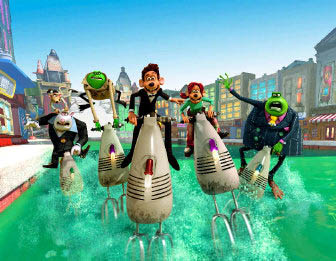
Kristin here—
Back in my December 10, 2006, entry, I discussed some reasons why CGI animated features often seem better than their live-action competition.
In passing I mentioned that industry news sources were discussing whether there were too many CGI films made last year. “Studio executives and commentators continue to debate whether there are now too many CGI films coming out. Indeed, the November 24 issue of Screen International says, ‘Much has been made this year of the seeming over-saturation of studios/computer-generated titles, with critics and analysts pointing to growing movie-goer apathy.’”
I realize that industry pundits have to have something to write about at year’s end. Unlike the critics, they don’t have the ten-best lists and who-will-win-the-Oscar options, so they assess box-office trends. One year indies suddenly are in, the next year the big sequels have surged back, and the next year the indies are back. To read the trade papers, one would think that trends come in neat one-year cycles. Maybe studio executives plan their upcoming films according to these supposed trends, but films being greenlit now will only appear years in the future. By then the cycles will have turned over and over.
The “too many toons” issue looks to me like a tempest in a teapot. If you look at the various box-office lists for 2006, CGI animation did better proportionately than live-action films did.
Let’s start at the bottom. The December 25-31, 2006 issue of Variety ran Nicole LaPorte’s “2006: H’w’d diagnoses its duds.” (I’d link to the online version, but it seems inexplicably to have disappeared from Variety.com.) There she talked about the 10 biggest failures of the year. Despite the title, the diagnosis and choice of films was done not by studio employees but by an “inhouse Variety poll.” To be included, films had to be relatively big-budget items that could plausibly have been hits on the basis of the track records of their directors, stars, or source material. (e.g., Lady in the Water, Poseidon, A Good Year).
One animated feature made the list: Flushed Away. I have already expressed my liking for this film and made some suggestions about why it undeservedly failed. Presumably it is a coincidence that DreamWorks’ head of marketing is leaving the company to set up on her own. She had presided over many hits for DreamWorks, and her new firm will continue to work with its releases. Still, the Variety story announcing the move refers to the lackluster performance of Flags of Our Fathers but does not mention Flushed Away or earlier Aardman films.
OK, so one of ten flops as designated by Variety staff members was a CGI feature. Nine of them are live-action films.
Now let’s go to the top of the list. The ten highest domestic box-office grossers in 2006 included four CGI hits: Cars, #2, Ice Age: The Meltdown, #7, Happy Feet, #8, and Over the Hedge, #10. On the worldwide chart, these four films rank high as well: Ice Age: The Meltdown, #3, Cars, #5, Happy Feet, #10, and Over the Hedge, #11. In the domestic market, 6 other toons make the top 100. So, 4 out of 10 toons are in the top ten, while 6 out of 90 live-action films make that short-list. I’m no math whiz, but that looks like 40% versus 6.6% to me.
Of course, as I pointed out back in the infancy of this blog, grosses aren’t the best measure of success. How much a film cost obviously determines how profitable it will be. Casino Royale, the #9 domestic box-office pull in 2006, took in $164 million—it is unanimously hailed as a hit, but it cost a reported $150 million to make. There’s also the factor of “prints and advertising”: how much it costs to order thousands of copies of a film and how much is put into the various forms of publicity. As I noted, P & A costs are seldom announced.
Recently, however, Kagan, a company with access to proprietary industry figures, put out its list of the 10 most profitable films of 2006. (Only films that “open wide” are included. That used to mean something like 500 or 600 theaters, but as more films come out on thousands of screens, the term has become pretty vague.) Kagan does factor in P & A expenditures alongside the filmmaking budget to determine a figure for a film’s total costs. It also has a formula to calculate the total income from all major forms of distribution: not just theatrical box-office, but DVD and the various other video and TV income for a film. The result is about as accurate a notion of profitability as we outside the industry are likely to get.
Going by Kagan’s reasonably reliable profitability figures, how do animated features stack up? We all know that CGI is expensive. A live-action feature that depends very heavily on computer trickery might spend as much as half its budget on special effects.
Surprisingly, CGI animation can be profitable. Kagan pronounced Ice Age: The Meltdown the most profitable film of 2006. With total production, marketing, and other direct costs of $256.4 million and an estimated $1.05 billion worldwide gross from all distribution channels, the proportion words out to 4.11 on the “Kagan Profitability Index.” (A film generally is assumed to be profitable if it achieves a KPI rating of 1.75 or more.)
Three other animated films made the top ten on the Kagan KPI list: Cars was the 8th most profitable film, Over the Hedge the 9th, and Happy Feet the 10th. These figures are all the more remarkable when one considers that a high proportion of tickets sold for animated films tend to be at the lower children’s admission prices.
The real question isn’t really whether there are too many animated features coming out. It’s actually how large the G and PG markets are. Live-action films come in all ratings, so they are not all competing with each other. R-rated horror films compete with other edgy teen-oriented movies but not with family-friendly holiday movies. Toons tend to compete with each other, but they also compete with G and PG live-action films. Flushed Away was not done in because it opened on the same weekend as another CGI toon. It presumably sank partly because it was released on the same day as The Santa Clause 3.
In 2006, live-action films for children didn’t do as well among domestic grossers as animated ones did. Night at the Museum was #5 with $205 million, but the next highest film of this type, The Santa Clause 3, took in $84 million to end up at #22.
Bottom line—and that’s what we are talking about here—there doesn’t seem to be a glut of animated films so far. Let’s see what Shrek 3 and the other CGI toons of 2007 lead the pundits to diagnose a year from now.
Updates and outtakes (in which we try, perhaps in vain, to catch up with ourselves)
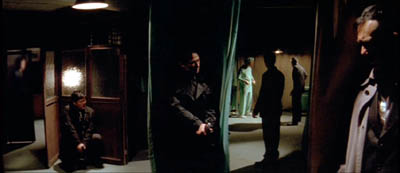
Exiled
Kristin writes:
“The Hobbit Film: New Developments” (January 13, 2007)
In this entry I discussed Bob Shaye’s recent claim that Peter Jackson would never get a chance to direct The Hobbit for New Line. I mentioned that one of the factors involved in the negotiations about who would direct is that the production rights will eventually revert to producer Saul Zaentz. I didn’t know the length of the option on those rights, which New Line currently holds. The January issue of the fantasy/sci fic magazine Locus says that the rights will revert to Zaentz in 2009.
Zaentz had owned the rights since the mid-1970s and sold them to Miramax in early 1997. Miramax had the two-film version of The Lord of the Rings in pre-production for about 18 months and then sold the rights to New Line in August of 1998. I don’t know what the source of Locus’ information is, but a twelve-month option would seem pretty plausible.
If that information is correct, New Line only has about two years to get the actual making of the film underway. It takes years for any big film to lumber into production in Hollywood these days, so the studio doesn’t have a lot of room to wiggle.
“By Annie Standards” (December 14, 2006)
Here I talked about methods for publicizing animated features. One way, I suggested, would be to foster audience interest in the various animation awards other than the Oscars. I remarked, “Under Academy rules, only three animated features can be nominated in any year unless sixteen or more such features are released that year. Then the number of nominations jumps to five, but so far that hasn’t happened. It may finally happen this year, if all sixteen features currently under consideration qualify under Academy rules.”
Close, but not close enough. On January 11, Variety announced that one film, Luc Besson’s Arthur and the Invisibles, had been disqualified as an animated feature. To qualify, a film must have at least 75% animated footage, and Arthur has too much live action.
With the number of qualifying features down to fifteen, only three can be nominated. Probably Cars will win, as I predicted in the original entry. It just won the Golden Globe in the newly established Animated Film category.
“Snakes, No, Borat, Yes: Not All Internet Publicity Is the Same” (January 7, 2007)
Here I suggested some reasons why Snakes on a Plane failed at the box office and Borat: Cultural Learnings of America for Make Benefit Glorious Nation of Kazakhstan succeeded, despite the fact that both garnered considerable fan-generated publicity on the internet. I mentioned that Sacha Baren Cohen had appeared on talk shows in character as Borat rather than in persona proper: “Each appearance by “Borat,” supposedly there to talk about the film, ended up being a hilarious performance by Cohen, ad-libbing on everything around him—the chairs, the coffee mugs, the cameras, the audience. Spectators ended up with one impression about the film: it was about this incredibly funny guy doing incredibly funny things.”
Trying to correct the widespread assumption that Borat was an improvised film, the January 8-14 issue of Variety ran a story about how Cohen worked with three scriptwriters, Peter Baynham, Dan Mazer, and Anthony “Ant” Hines: “The scribes even concoct Cohen’s dialogue for his promo appearances on ‘The Tonight Show’ and ‘Live With Regis and Kelly.’” Although Cohen presumably ad-libs to meet specific circumstances of each talk show, the publicity appearances are even more controlled by Cohen than I had assumed.
I also remarked that it is difficult to judge the degree to which the film manipulated the scenes of Borat’s encounters with real people. Especially in terms of editing and sound techniques, there was clearly much opportunity for this manipulation. The same Variety story goes on to say, “Much of the script had to be altered depending on how situations unravel. This means the writers ultimately end up producing the equivalent of multiple scripts, much of which ends up on the cutting room floor.” I’m not sure how chunks of scripts can end up on the cutting-room floor, but the point is that the filmmakers were carefully stitching the “documentary” scenes together on the script level and presumably would do so through stylistic means as well.
David writes:
Back to the Hotel
The Uchoten Hotel (aka Suite Dreams, blogged here) has acquired yet another English-language title: Hotel Avanti. It made it to #93 on Variety‘s list of the world’s 100 top-grossing films, with $51 million box office in Japan and none yet recorded overseas.
Speaking of Variety‘s list, the highest-grossing non-English language item turns out to be Bong Joon-ho’s Korean hit The Host (#59 at $84 million), due out in the US any month now. Only ten non-English-speaking films made the top 100, and of those, three were European (including Volver) but all the rest were Asian: Chinese (Fearless), Korean (The Host and King and Clown), and Japanese (Tales from Earthsea, Umizaru 2 Limit of Love, Hotel Avanti, and Japan Sinks–no rude remarks, please).
The entire list is in the 15-21 January hard copy of Variety, p. 15, but evidently it isn’t yet available on the paper’s site.
More on Johnnie To
In an earlier blog I praised Johnnie To as a director who shot and cut PTU smoothly and crisply. I waited through the fall, hoping somehow to see To’s latest, Exiled, on the big screen at one festival or another. No such luck. So last night I broke down and watched the DVD. Making full use of the widescreen format, To shows that classic technique can be at once rigorous and imaginative.
Exiled was more visually engaging than any US film I can recall last year, including Miami Vice. It immediately became my Best Film of 2006 That I Saw in 2007. (Runner-up: Children of Men.) I visited Milkyway while the film was being shot, and I hope to blog about the result in a future entry.
At Large on the Internets
On this very site, I’ve posted a new essay on action movies.
Annie Frisbie interviewed me for the Zoom-In podcast here. Annie is also blogging/reviewing Sundance films here.
Fox Independent visited Madison and posted videos on its site. The setup and the interview with filmmaker and teacher Erik Gunneson are here. An interview with me is here.













